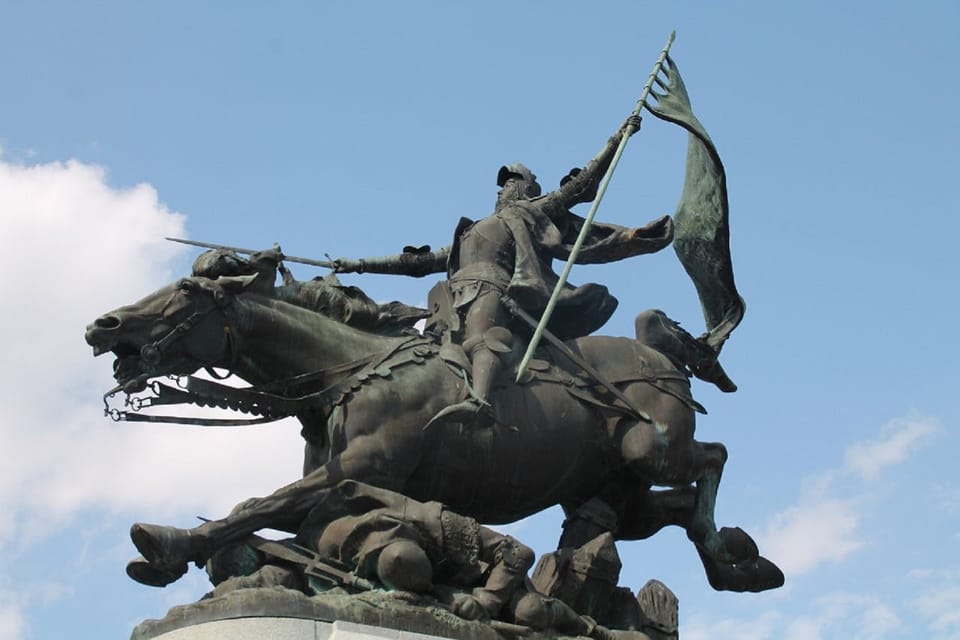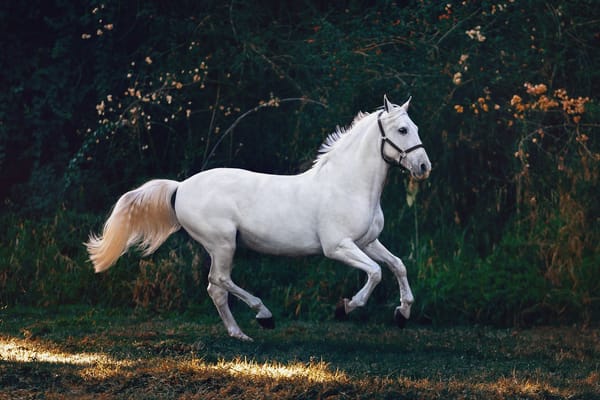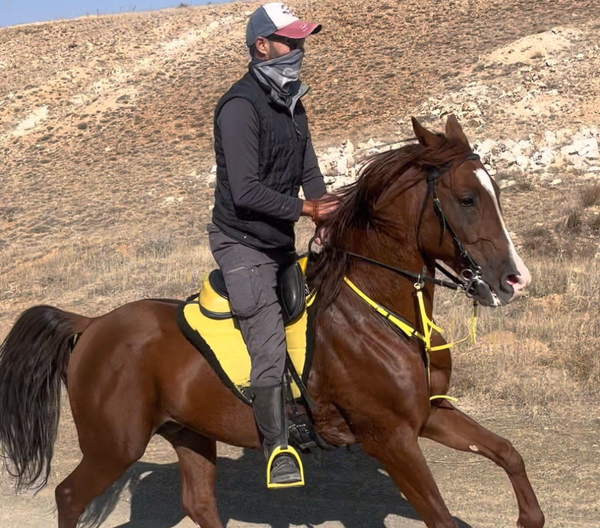30+ Famous Horses Names of Kings, Queens, and Sultans
Are You Truly Ready to Put Your Mobile or Web App to the Test?
Don`t just assume your app works—ensure it`s flawless, secure, and user-friendly with expert testing. 🚀
Why Third-Party Testing is Essential for Your Application and Website?We are ready to test, evaluate and report your app, ERP system, or customer/ patients workflow
With a detailed report about all findings
Contact us nowTable of Content
As a horse rider, owner, and trainer, I’ve always been fascinated by the deep bond between humans and horses. There’s something extraordinary about the way a horse responds to its rider—not just physically, but emotionally. Horses aren’t just animals; they’re partners in battle, adventure, and history.
Beyond my personal experience with horses, my interest in history and my background as a doctor make me appreciate even more the role these noble creatures played in shaping civilizations.
From carrying warriors across vast empires to standing beside rulers in moments of triumph and defeat, these horses weren’t just transportation—they were symbols of power, loyalty, and courage.
Some were legendary warhorses, others were mythical steeds, and a few became the foundation sires of royal bloodlines. But all of them share one thing: they carried kings, sultans, and emperors toward their destinies. Whether in the deserts of Arabia, the battlefields of Europe, or the grand palaces of the Ottoman Empire, these horses left their hoofprints on history.
Let’s take a ride through time and meet the most famous horses that stood beside the greatest rulers the world has ever known. 🏇✨
Legendary Horses of Kings, Sultans, and Warriors
Here’s a list of some of the most famous horses in history, along with a brief note about their riders and time periods.
Ancient & Classical Era
- Bucephalus – Alexander the Great (356–323 BC): The legendary warhorse of Alexander, known for his loyalty and unmatched speed. Alexander named a city, Bucephala, in his honor.
- Incitatus – Emperor Caligula (12–41 AD): A pampered horse that Caligula allegedly wanted to make a senator, symbolizing the emperor’s eccentricity.
- Al-Buraq – Prophet Muhammad (PBUH, 570–632 AD): A celestial, winged horse from Islamic tradition, believed to have carried the Prophet on his Night Journey (Isra and Miraj).
- Sham – Prophet Muhammad (PBUH, 570–632 AD): One of the Prophet’s Arabian horses, known for his speed and endurance.
- Murtajiz – Prophet Muhammad (PBUH, 570–632 AD): Another of the Prophet’s trusted warhorses, often ridden in battle.
- Sakb – Caliph Ali ibn Abi Talib (600–661 AD): The warhorse of Ali, the fourth Caliph and cousin of Prophet Muhammad, used in early Islamic conquests.
- Llamrei – King Arthur (Legendary, 5th-6th Century AD): A mare attributed to the legendary British king, featured in Welsh mythology.
- Bayard – Four Sons of Aymon (Medieval legend, linked to Charlemagne, 742–814 AD): A magical horse capable of carrying four riders at once, appearing in French and Italian epic tales.
- Lazlos – Emperor Charlemagne (742–814 AD): One of Charlemagne’s warhorses, though not as famous as Tencendur or Veillantif.
- Tencendur – Charlemagne (742–814 AD): The battle steed of Charlemagne, mentioned in medieval French epics.
- Veillantif – Roland (Died 778 AD): The warhorse of Roland, Charlemagne’s Paladin, who died heroically at the Battle of Roncevaux Pass.
Medieval & Crusades Era (11th-15th Century)
- Qalb al-Ahmar (Red Heart) – Saladin (1137–1193 AD): The warhorse of Salah ad-Din (Saladin), the great Muslim leader who defeated the Crusaders at the Battle of Hattin (1187 AD).
- Babieca – El Cid (1043–1099 AD): The fearless warhorse of Rodrigo Díaz de Vivar (El Cid), the Spanish knight and hero of the Reconquista.
- Berkut – Sultan Mehmed II (1432–1481 AD): The horse that carried Mehmed II (The Conqueror) during the siege of Constantinople (1453).
- Shahbaz – Sultan Suleiman the Magnificent (1494–1566 AD): The mighty white warhorse of Sultan Suleiman, used in his campaigns across Europe and the Middle East.
- Dhu’l-Janah – Imam Husayn ibn Ali (626–680 AD): The horse of Imam Husayn, ridden into the Battle of Karbala (680 AD), a crucial event in Islamic history.
Early Modern Era (16th-19th Century)
- White Sorrel – King James II of England (1633–1701): The horse that carried King James II at the Battle of the Boyne (1690) before being shot under him.
- Roan Barbary – King Richard II of England (1367–1400): Mentioned in Shakespeare’s play Richard II, symbolizing the fallen king’s loss of power.
- Morel Favori – King Louis XIV of France (1638–1715): The favorite horse of the Sun King, known for his love of ornate, high-bred horses.
- Copenhagen – Duke of Wellington (1769–1852): The Duke’s warhorse at the Battle of Waterloo (1815), enduring hours of battle against Napoleon’s forces.
- Marengo – Napoleon Bonaparte (1769–1821): Napoleon’s famous Arabian warhorse, named after his victory at the Battle of Marengo (1800).
- Persian War – Prince Philip, Duke of Edinburgh (1921–2021): A racehorse favored by Prince Philip, known for competing in steeplechase races.
- Shergar – Queen Elizabeth II (1926–2022): A champion racehorse owned by Queen Elizabeth, mysteriously kidnapped in 1983.
American & Modern Military Era (19th-20th Century)
- Darley Arabian – Foundation Sire of Modern Thoroughbreds (Born 1700): One of the three foundation sires of modern racehorses, influencing royal bloodlines worldwide.
- Traveller – General Robert E. Lee (1807–1870): The loyal warhorse of the Confederate general during the American Civil War.
- Comanche – Survivor of the Battle of Little Bighorn (1876): The only known survivor of Custer’s Last Stand, ridden by Captain Keogh.
Mythological & Fictional Horses
- Surus – Hannibal’s War Elephant (247–183 BC): Not a horse, but Hannibal’s most famous elephant, used in his Alps crossing.
- Arvak and Alsvid – Norse Mythology (Ancient Times): Two mythical horses pulling the Sun’s chariot across the sky.
- Gullfaxi – Hrungnir’s Horse (Norse Mythology): A powerful giant’s horse, later taken by the god Thor.
- Grani – Sigurd’s Horse (Norse Mythology)
- Given to Sigurd (Siegfried), the dragon slayer, and a descendant of Odin’s horse, Sleipnir.
- Shadowfax – The Lord of the Rings (fictional, inspired by historical warhorses)
- The mythical, super-fast horse of Gandalf, based on the legendary warhorses of history.
Final Thoughts
These legendary steeds weren’t just transportation—they were symbols of power, loyalty, and honor. From warhorses leading great empires to mythical creatures in legends, these horses helped shape history. 🏇✨





![The Hidden Crisis in Horse Care: Your horse is NOT a ***** Motorcycle [offtopic]](https://images.unsplash.com/photo-1511195188569-9b97074ae1b1?crop=entropy&cs=tinysrgb&fit=max&fm=jpg&ixid=M3wxMTc3M3wwfDF8c2VhcmNofDV8fGhvcnNlfGVufDB8fHx8MTcyODY1NTY1NHww&ixlib=rb-4.0.3&q=80&w=600)




